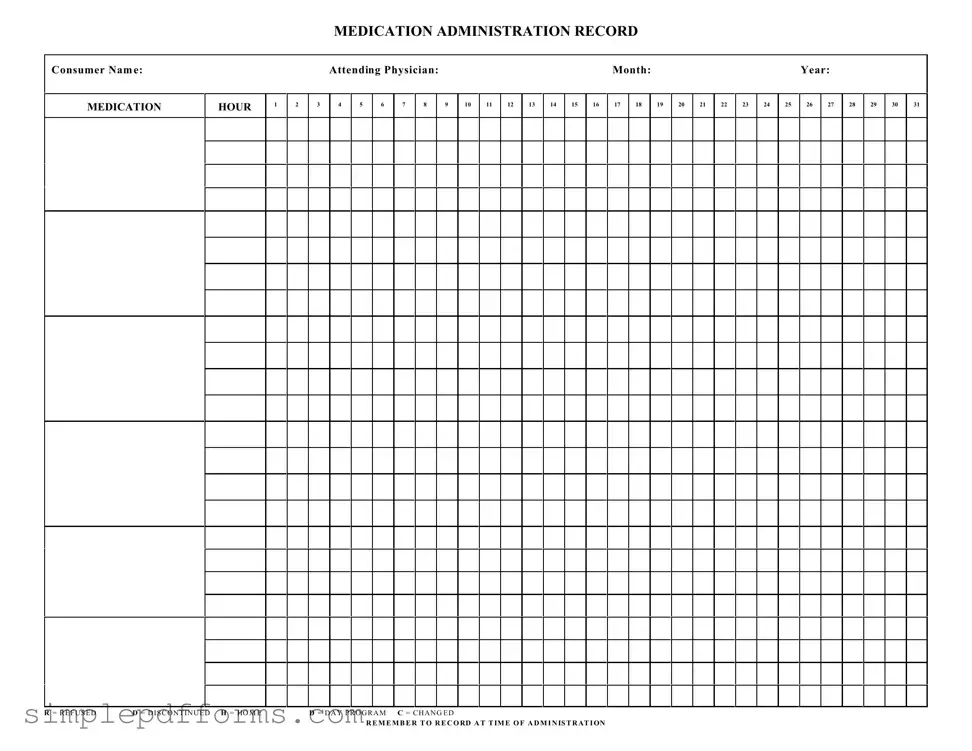Filling out the Medication Administration Record Sheet (MARS) accurately is crucial for ensuring that patients receive their medications safely and effectively. However, mistakes can easily occur. One common error is failing to include the consumer's name at the top of the form. Omitting this essential detail can lead to confusion and mix-ups, especially in settings where multiple individuals receive care.
Another frequent mistake involves neglecting to document the attending physician's name. This information is vital for tracking who prescribed the medication and for ensuring that any questions or concerns can be addressed with the appropriate medical professional. Without this detail, accountability can be compromised.
Many individuals also overlook the importance of accurately noting the date on the MARS. The month and year should be clearly indicated to avoid discrepancies in medication administration. A missing or incorrect date can complicate record-keeping and may even impact treatment plans.
Furthermore, failing to record the time of administration is a significant oversight. Each medication has a specific schedule, and missing this detail can lead to patients receiving doses too early or too late. It is essential to note the exact time when each medication is administered to maintain proper adherence to the prescribed regimen.
Another common issue is using the wrong codes for documenting medication status. For instance, mistakenly marking a medication as refused when it was actually administered can lead to serious misunderstandings about a patient's compliance and health status. Familiarity with the coding system is crucial for accurate reporting.
Additionally, individuals may forget to update the form when a medication is changed or discontinued. If a medication is no longer prescribed, the record should reflect this change immediately. Failing to do so can result in administering outdated or unnecessary medications.
In some cases, individuals may not double-check their entries. This lack of verification can lead to simple yet impactful mistakes, such as transposing numbers or miswriting medication names. A thorough review of the completed MARS can catch these errors before they affect patient care.
Lastly, it’s important to remember that the MARS is a legal document. Neglecting to sign or date the form after completion can render it incomplete. This oversight can have significant implications, especially in situations where legal accountability is necessary.

